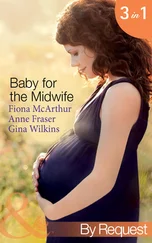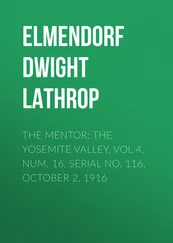Anne Blunt - A Pilgrimage to Nejd, the Cradle of the Arab Race. Vol. 2 [of 2]
Здесь есть возможность читать онлайн «Anne Blunt - A Pilgrimage to Nejd, the Cradle of the Arab Race. Vol. 2 [of 2]» — ознакомительный отрывок электронной книги совершенно бесплатно, а после прочтения отрывка купить полную версию. В некоторых случаях можно слушать аудио, скачать через торрент в формате fb2 и присутствует краткое содержание. ISBN: , Жанр: foreign_antique, foreign_prose, Путешествия и география, на английском языке. Описание произведения, (предисловие) а так же отзывы посетителей доступны на портале библиотеки ЛибКат.
- Название:A Pilgrimage to Nejd, the Cradle of the Arab Race. Vol. 2 [of 2]
- Автор:
- Жанр:
- Год:неизвестен
- ISBN:http://www.gutenberg.org/ebooks/42217
- Рейтинг книги:4 / 5. Голосов: 1
-
Избранное:Добавить в избранное
- Отзывы:
-
Ваша оценка:
- 80
- 1
- 2
- 3
- 4
- 5
A Pilgrimage to Nejd, the Cradle of the Arab Race. Vol. 2 [of 2]: краткое содержание, описание и аннотация
Предлагаем к чтению аннотацию, описание, краткое содержание или предисловие (зависит от того, что написал сам автор книги «A Pilgrimage to Nejd, the Cradle of the Arab Race. Vol. 2 [of 2]»). Если вы не нашли необходимую информацию о книге — напишите в комментариях, мы постараемся отыскать её.
A Pilgrimage to Nejd, the Cradle of the Arab Race. Vol. 2 [of 2] — читать онлайн ознакомительный отрывок
Ниже представлен текст книги, разбитый по страницам. Система сохранения места последней прочитанной страницы, позволяет с удобством читать онлайн бесплатно книгу «A Pilgrimage to Nejd, the Cradle of the Arab Race. Vol. 2 [of 2]», без необходимости каждый раз заново искать на чём Вы остановились. Поставьте закладку, и сможете в любой момент перейти на страницу, на которой закончили чтение.
Интервал:
Закладка:
On our way back we crossed a party of Shammar Bedouins, with their camels come for water from the Nefûd, which is close by. They gave us some lebben to drink, the first we have tasted this year. There were women with them. We also met a man alone on a very thin delúl. Mohammed made some rather uncomplimentary remarks about this animal, whereupon the owner in great scorn explained that she was a Bint Udeyhan, the very best breed of dromedaries in Arabia, and that if Mohammed should offer him a hundred pounds he would not sell her, that she was the camel always sent by Ibn Rashid on messages which wanted speed. He then trotted off at a pace which, though it appeared nothing remarkable, soon took him out of sight.
Awwad and Ibrahim Kasir have been back to the Haj camp for water, and have brought news that the Emir has actually arrived, and a message from him, that if we go on to the wells of Shaybeh he will meet us there.
February 8. – We have marched fifteen miles to-day from point to point, making a circuit round Taybetism and are now encamped at the top of the Nefûd. A Shammar boy of the name of Izzar with three delúls came back from the Haj camp yesterday with Awwad, and he undertakes to show us the way if we want to go on in front. He would sooner travel with us than with the Haj, as his beasts are thin, and he is afraid of their being impressed for the pilgrims. He wants to drive them unloaded to Meshhed, so that they may grow fat on the way, and then load them for the home voyage with wheat. He talks about six or seven days to Meshhed; but Wilfrid insists that we are not twenty miles nearer Meshhed than when we left Haïl, as we have been travelling almost due east, instead of nearly due north, and there must be four hundred miles more to go. This should take us twenty days at least. But the servants will not believe. We shall see who is right. They and Mohammed are very unwilling to go on before the Haj, but now that we have got this boy Izzar we are determined not to wait. If we delay we shall run short of provisions, which would be worse than anything. Already, Awwad says, the pilgrims are complaining loudly that they shall starve if they are kept longer waiting in this way. They have brought provisions for so many days and no more, and there is no place now where they can revictual. “The Haj,” added Awwad, “is sitting by the fire, very angry.”
Our march to-day was enlivened by some hunting, though with no good result. Sayad and Shiekha coursed a herd of gazelles, and succeeded in turning them, but could not get hold of any, though one passed close to Mohammed, who fired without effect. They made off straight for the Nefûd. The falcon was flown at a houbara (frilled bustard), but the bustard beat him off, as he is only a last year’s bird, and not entered to anything but hares. Rasham, however, is an amusement to us and sits on his perch at our tent door. This spot is pleasant and lonely, within a hundred yards of the edge of the Nefûd.
February 9. – Having sent Izzar to a high point for a last look back for the Haj and in vain, we have given them up and now mean to march straight on without them. It is however annoying that we are still going east instead of north, coasting the Nefud I suppose to get round instead of crossing it; but we dare not plunge into it against Izzar’s positive assurance that the other is the only way. Soil sprinkled with jabsin (talc), and in places with the fruit of the wild poisonous melon. Passed the well of Beyud (eggs) thirty feet deep, and travelled six and a half hours, perhaps eighteen miles, to our present camp absolutely without incident. Looking at the stars to-night, Mohammed tells me they call Orion’s belt “mizan” (the balance), and the pole star “el jiddeh” (the kid). We now have milk every day from Izzar’s she-camel, a great luxury.
February 10. – At eight o’clock we reached the wells of Shaybeh. There are forty of them close together in the middle of a great bare space, with some hills of white sand to the north of them. The wind was blowing violently, drifting the sand, and the place looked as inhospitable a one as could well be imagined, a good excuse for over-ruling all notions of stopping there, “to wait for the Emir.”
Shaybeh stands on the old Haj road which passes east of Haïl, making straight for Bereydeh in Kasîm, and the reason of our travelling so far east is thus explained. Now we have turned at right angles northwards, and there is a well-defined track which it will be easy enough for us to follow, even if we lose our Shammar guide. After leaving the wells, we travelled for some miles between ridges of white sand, which the wind was shaping “like the snow wreaths in the high Alps.” The white sand, I noticed, is always of a finer texture than the red, and is more easily affected by the wind. It carries, moreover, very little vegetation, so that the mounds and ridges are less permanent than those of the Nefûd. While we were watching them, the wind shifted, and it was interesting to observe how the summits of the ridges gradually changed with it, the lee side being always steep, the wind side rounded. We gradually ascended now through broken ground to the edge of a level gravelly plain, beyond which about four miles distant we could see the red line of the real Nefûd. We had nearly crossed this, when we sighted an animal half a mile away, and galloped off in pursuit, Mohammed following. I thought at first it must be a wolf or a wild cow, but as we got nearer to it, we saw that it was a hyæna, and it seemed to be carrying something in its mouth. The dogs now gave chase, and the beast made off as fast as it could go for the broken ground we had just left, and where it probably had its den, dropping in its hurry the leg of a gazelle, the piece of booty it was bringing with it from the Nefûd. The three greyhounds boldly attacked it, Sayad especially seizing it at the shoulder, but they were unable to stop it, and it still went on doggedly intent on gaining the broken ground. It would have escaped had not we got in front and barred the way. Then it doubled back again, and we managed to drive it before us towards where we had left our camels. I never saw so cowardly a creature, for though much bigger than any dog, it never offered to turn round and defend itself as a boar or even a jackal would have done, and the dogs were so persistent in their attacks, that Wilfrid had great difficulty in getting a clear shot at it, which he did at last, rolling it over as it cantered along almost under the feet of our camels. Great of course were the rejoicings, for though Mohammed and Awwad affected some repugnance, Abdallah declared boldly and at once, that hyena was “khosh lahm,” capital meat. So it was flayed and quartered on the spot. I confess the look of the carcass was not appetising, the fat with which it was covered being bright yellow, but hyænas in the desert are not the ghoul-like creatures they become in the neighbourhood of towns, and on examination the stomach was found to be full of locusts and fresh gazelle meat. Wilfrid pronounces it eatable, but I, though I have just tasted a morsel, could not bring myself to make a meal off it. I perceive that in spite of protestations about unclean food, the whole of this very large and fat animal has been devoured by our followers. I am not sure whether Mohammed kept his resolution of abstaining.
Locusts are now a regular portion of the day’s provision with us, and are really an excellent article of diet. After trying them in several ways, we have come to the conclusion that they are best plain boiled. The long hopping legs must be pulled off, and the locust held by the wings, dipped into salt and eaten. As to flavour this insect tastes of vegetable rather than of fish or flesh, not unlike green wheat in England, and to us it supplies the place of vegetables, of which we are much in need. The red locust is better eating than the green one. 5 5 Red is said to be the female and green the male, but some say all are green at first and become red afterwards.
Wilfrid considers that it would hold its own among the hors d’œuvre at a Paris restaurant; I am not so sure of this, for on former journeys I have resolved that other excellent dishes should be adopted at home, but afterwards among the multitude of luxuries, they have not been found worth the trouble of preparation. For catching locusts, the morning is the time, when they are half benumbed by the cold, and their wings are damp with the dew, so that they cannot fly; they may then be found clustered in hundreds under the desert bushes, and gathered without trouble, merely shovelled into a bag or basket. Later on, the sun dries their wings and they are difficult to capture, having intelligence enough to keep just out of reach when pursued. Flying, they look extremely like May flies, being carried side-on to the wind. They can steer themselves about as much as flying fish do, and can alight when they like; in fact, they very seldom let themselves be drifted against men or camels, and seem able to calculate exactly the reach of a stick. This year they are all over the country, in enormous armies by day, and huddled in regiments under every bush by night. They devour everything vegetable; and are devoured by everything animal: desert larks and bustards, ravens, hawks, and buzzards. We passed to-day through flocks of ravens and buzzards, sitting on the ground gorged with them. The camels munch them in with their food, the greyhounds run snapping after them all day long, eating as many as they can catch. The Bedouins often give them to their horses, and Awwad says that this year many tribes have nothing to eat just now but locusts and camels’ milk; thus the locust in some measure makes amends for being a pestilence, by being himself consumed.
Интервал:
Закладка:
Похожие книги на «A Pilgrimage to Nejd, the Cradle of the Arab Race. Vol. 2 [of 2]»
Представляем Вашему вниманию похожие книги на «A Pilgrimage to Nejd, the Cradle of the Arab Race. Vol. 2 [of 2]» списком для выбора. Мы отобрали схожую по названию и смыслу литературу в надежде предоставить читателям больше вариантов отыскать новые, интересные, ещё непрочитанные произведения.
Обсуждение, отзывы о книге «A Pilgrimage to Nejd, the Cradle of the Arab Race. Vol. 2 [of 2]» и просто собственные мнения читателей. Оставьте ваши комментарии, напишите, что Вы думаете о произведении, его смысле или главных героях. Укажите что конкретно понравилось, а что нет, и почему Вы так считаете.
![Anne Blunt A Pilgrimage to Nejd, the Cradle of the Arab Race. Vol. 2 [of 2] обложка книги](/books/750183/anne-blunt-a-pilgrimage-to-nejd-the-cradle-of-the-cover.webp)











